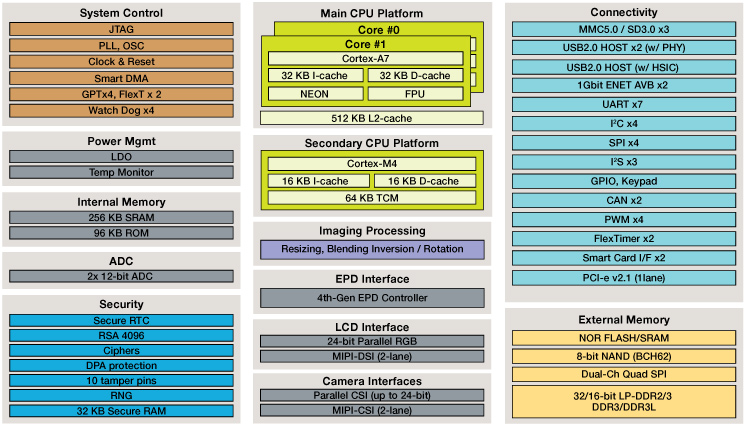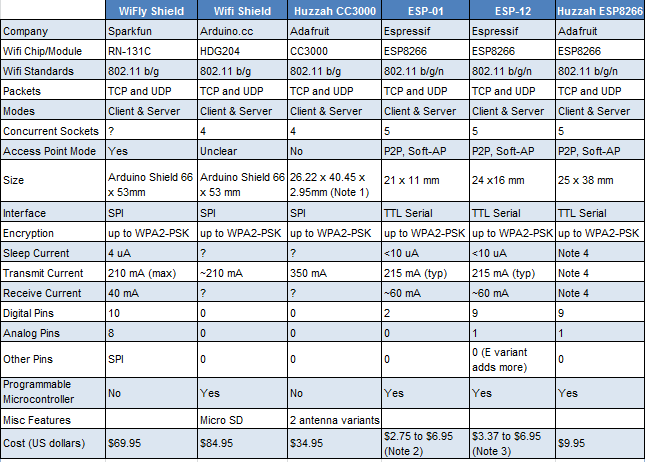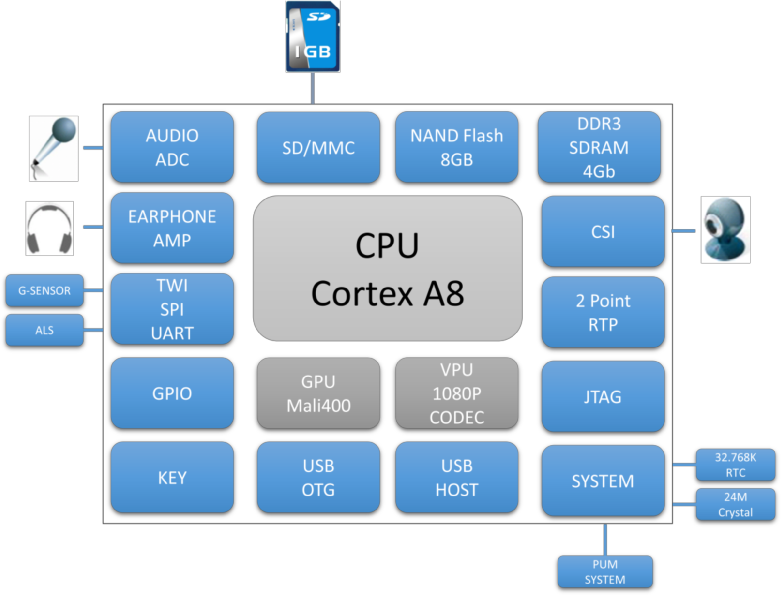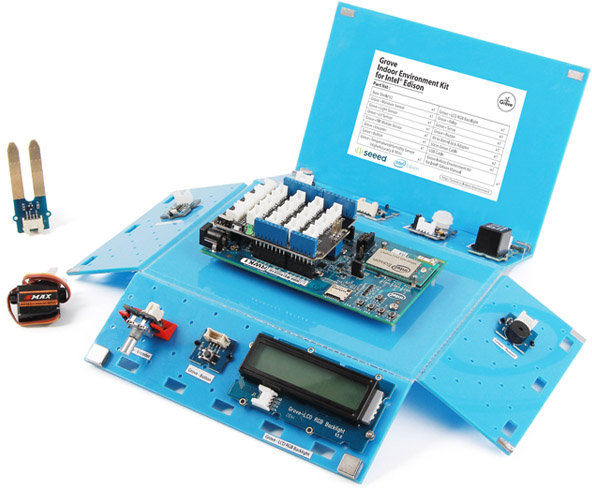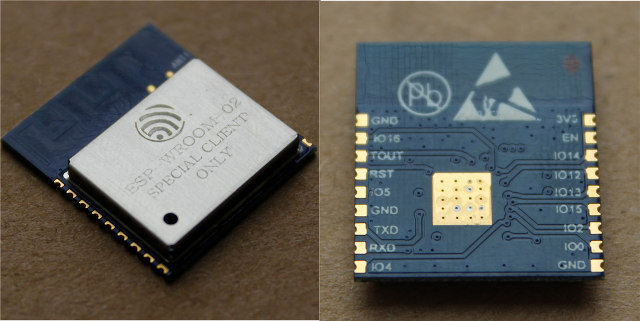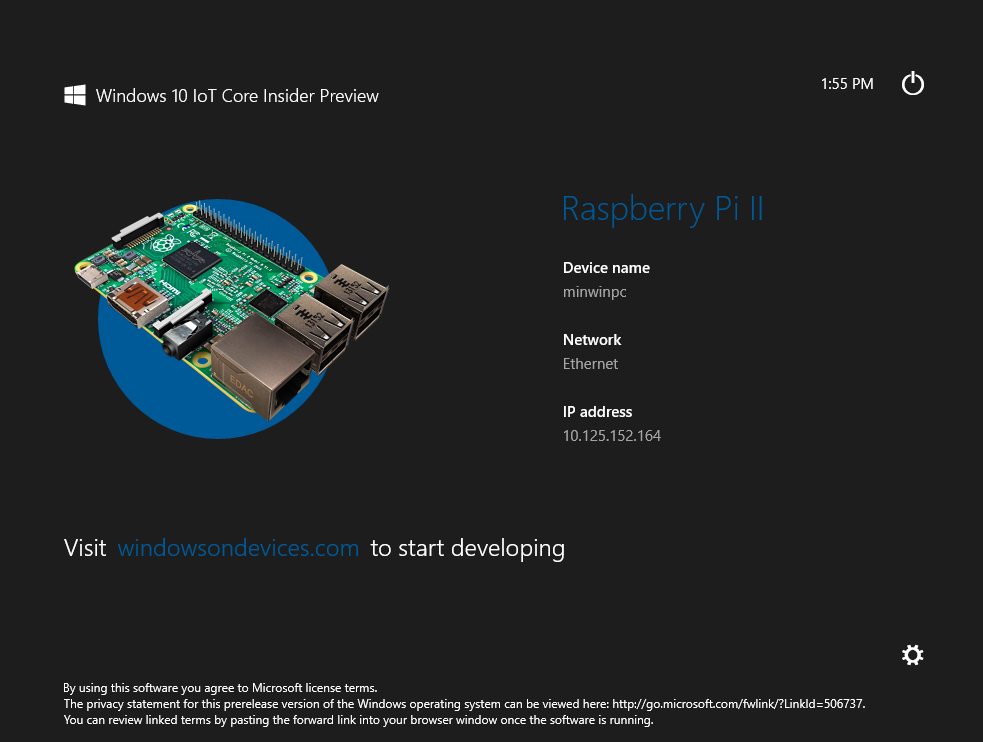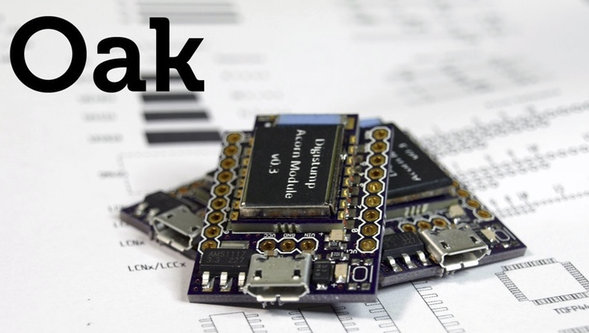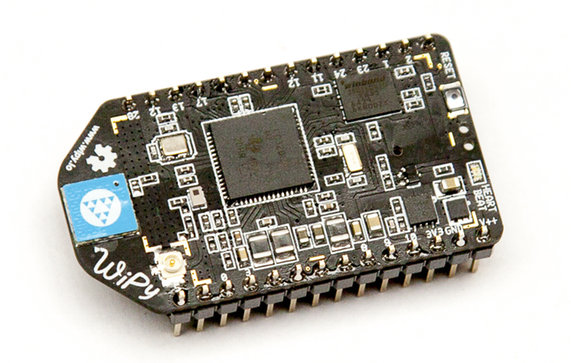Freescale announced plans for i.MX 7 and i.MX 8 processors in 2013, but it’s only in the last few months there have been some patchsets submitted to the ARM Linux Kernel mailing list, and so far all documentation was only available to companies and developers under NDA. Now the company has officially launched i.MX 7 series, and although all documents are not available yet, Freescale has released a factsheet providing an overview about the processors. Freescale i.MX 7 series processors targets applications such as wearables, e-readers, secure point-of-sale equipment, smart home controls, industrial automation products and other IoT solutions. Two processors are currently available: the single core i.MX 7Solo processor, and the dual core i.MX 7Dual processor. Both basically share the same specifications, but beside the extra Cortex A7 core, i.MX 7Dual also adds on extra USB host port, a PCIe interface, an extra Gigabit Ethernet port, and a 4th […]
IoT Wi-Fi Modules Comparison Table – ESP8266 vs CC3000 vs RN131 vs HDG204
We now have several options to add WiFi to IoT / embedded projects at relatively low cost, and ESP8266 based solutions clearly wins on costs, but are there some advantages to other higher priced modules? To help us find out, Mike Barela has put up a comparison table with some Wi-FI modules based on Espressif ESP8266, Texas Instruments CC3000, Microchip RN131, and H&D Wireless HDG204 processors. Note 1 – Also comes in Arduino Shield size with SD card slot for $39.95 Note 2 & 3 – Adafruit and Sparkfun sell tested units with AT Firmware for $6.95. lower prices are available on eBay, but quality may vary. Note 4 – Currents are probably somewhat higher than stock ESP-12 due to onboard LED and regulator. The comparison is not exhaustive, but it still appears to show ESP8266 solutions support most features than pricer competing modules. There are however case where competing […]
Allwinner R8 Module Datasheet and Price. Is the $9 C.H.I.P Computer Selling at a Loss?
Allwinner R8 Cortex A8 processor, very similar to Allwinner A13, but optimized for IoT applications, was first unveiled via the $9 C.H.I.P computer crowdfunding campaign, but at the time we did not have that many technical details. However, Olimex had already made several Allwinner boards in the past, such as A20-OLinuXino-LIME, so they decided to investigate if they too could use Allwinner R8 processor, or rather Allwinner R8 Module (R8M) with R8 SoC, 4/8GB NAND Flash and 512 MB RAM. So they managed to get R8M datasheet, and got quoted $4.8 for Allwinner R8 and $16 for Allwinner R8M with 512 MB RAM and 8GB NAND Flash for 5,000 unit orders. Wait… If R8M module is $16, how can C.H.I.P sell it for $9? One difference is that C.H.I.P module only has 4GB NAND flash, but the module quoted to Olimex appears to come with 8GB flash, but it’s not […]
Seeed Studio Introduces Automation and Wearable Kits for Intel Edison
Intel Edison is a $50 module with a dual core Atom processor @ 500Mhz and a single core Quark MCU @ 100 Mhz, Wi-Fi and Bluetooth 4.0, as well as headers for I/Os that’s destined to be used in wearables and IoT applications. Seeed Studio has now launched two kits for the Intel module for home automation and wearables. Grove Indoor Environment Kit for Intel Edison The automation kit comes in a small blue box with the following parts (Intel Edison and baseboard not included): 1x base shield v2 that plugs into Edison baseboard and allows Grove modules connections 11 grove modules – temperature & humidity, LCD RGB backlight, relay, moisture sensor, servo, light sensor, buzzer, UV sensor, PIR motion sensor, encoder and button. 2x 26 AWG Grove Cables 9V to barrel jack adapter 1x USB cables 1x User guide Programming is done with Edison Arduino IDE as explained in […]
Espressif WROOM WiFi ESP8266 Modules are FCC and CE Certified
Espressif, the company behind ESP8266 (EX) Wi-Fi chip for IoT applications, has now opened store on Taobao, where they sell WROOM-02 and WROOM-02 modules based on ESP8266EX with FCC, CE, TELEC, and SRRC certifications. WROOM-01 has some soldered headers that make it easier to use for hobbyists and prototyping, while WROOM-02 is more compact, and should be more suitable to include in your own products. But otherwise, they share about the same specifications: SoC – Espressif Systems ESP8266EX 32-bit RISC processor @ 80 MHz with integrated WiFi Wi-Fi – 802.11 b/g/n with STA/AP/STA+AP operation modes Header – 2x 18-pin headers with SDIO 2.0, GPIOs, SPI, UART, GND and 3.3V pins Dimensions – 11.5mm x 11.5mm Temperature Range – -40C ~ 125C Certifications – FCC, CE, TELEC, and SRRC The company can also provide “hardware reference design, antenna design, and SDK for secondary development”, but you’re likely to find most of […]
Windows 10 IoT Preview for Raspberry Pi 2 and MinnowBoard Max
When Raspberry Pi 2 Model B was released, we were promised a Windows 10 image for the board, and today, Microsoft released “Windows 10 IoT Core Insider Preview” for both the Broadcom BCM2836 based Raspberry Pi 2 and Intel Atom E3800 series based Minnowboard MAX boards. To get started with either board, simply go to Windows IoT – Getting Started page. I’ll quickly go through the instructions for Raspberry Pi 2. Beside the board, you’ll also need a PC running Windows 10 Insider preview (Virtual machine not supported), a 5V power supply, a HDMI cable (optional but recommended), an Ethernet cable, and a 8GB micro SD card, class 10 or better. The you’ll need to configure a connect account, where I had to accept two EULA including “Windows 10 IoT Core Insider Preview EULA”, and once this is done the area of the page for EULA should just be blank, […]
$10 Digistump Oak ESP8266EX Board is Arduino Compatible, Connects to the Cloud, and More (Crowdfunding)
A few years ago, I wondered why adding Wi-Fi to Arduino had to be rather expensive ($40+), and why there weren’t any low cost and small form factor Wi-Fi boards for embedded applications. But we’re now in 2015, embedded is “dead” giving rise to IoT, and I’m left wondering how it’s possible to make IoT Wi-Fi modules that cheap, and whether people will ever stop churning out cheap Wi-Fi boards, as I’m flooded with such news weekly… So when I saw yet another ESP8266 board on Kickstarter I was about to dismiss it, but since it was made by Digistump, that has an active community with their other products like DigiSpark Pro or DigiX, I decided to have a closer look. Digistump Oak hardware specifications: MCU – Espressif ESP8266EX 32-bit microprocessor @ 80MHz (overclockable up to 160MHz) with 1MB ROM (~300KB available for user code), 64KB RAM, 512 bytes EEPROM […]
WiPy Wi-Fi Board for IoT Runs MicroPython on Texas Instruments CC3200 (Crowdfunding)
If you’ve interested in connecting devices via Wi-Fi, you’re being spoiled as “Internet of things” boards keeps getting designed and produced. The latest board with WiPy, a small board powered by Texas Instruments CC3200, running MicroPython, and consuming less than 1mA in suspended mode with Wi-Fi connected. WiPy specifications: MCU – TI CC3200 ARM Cortex-M4 @ 80 MHz with 256KB RAM, Wi-Fi and TCP/IP stack Storage – 2MB flash Connectivity – WiFi 802.11b/g/n 16Mbps (AP, Station and WiFi-Direct), on-board antenna and u.FL connector Expansion – 2x 14-pin headers (2.54mm pitch) with Up to 25 GPIOs 2x UART, SPI, I2C, I2S, and SD card 3×12 bit ADCs Others 4×16 bit timers with PWM and input capture RTC Hash and encryption engines: SHA, MD5, DES, AES Reset switch, heartbeat LED Power Supply – 3.6 – 5.5V DC input; 3.3V output up to 250mA Power Consumption – Active: 14 mA; Suspended (Wi-Fi connected): […]


